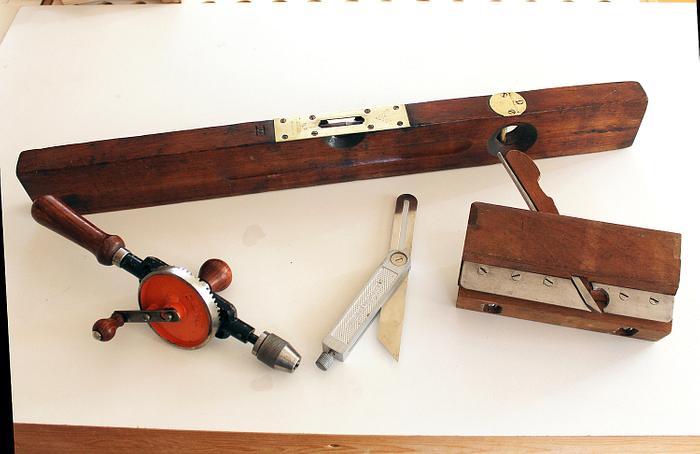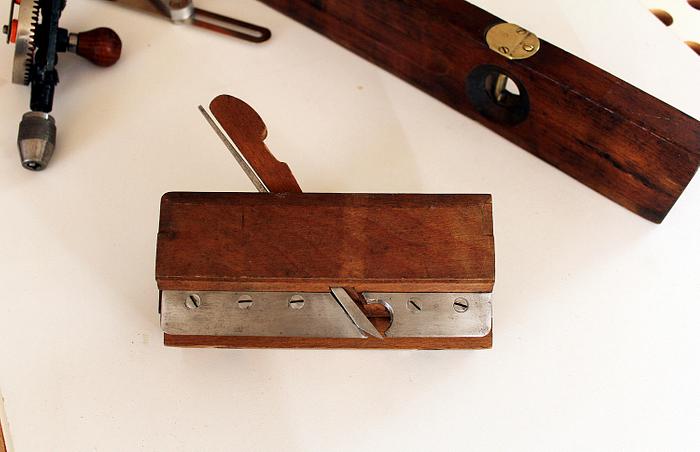While at my local wood supplier, they had a few shelves of vintage tools for sale. They do this in the Christmas period every year. So I immediately searched through and sought out some gems. I did find a few tools of which I either don't have or weren't broken and simply needed restoration. Another criteria when purchasing old tools is to make sure all the parts are there as replacement parts are virtually non-existent. You would need a second of the same to supply parts or need to fabricate your own parts. I purchased them, and later spent 3 hrs. or so disassembling , cleaning, polishing, adjusting them. I am very happy with how they turned out. Have always wanted an eggbeater hand drill ( the 1st cordless drill). The moving fillister plane (c. 1880's) for drawer bottom grooves had all its parts and was salvageable.
This handplane has an adjustable fence so grooves can be offset from an edge. A Stanley Level c. 1906 was too good a price to pass up. The Sliding Bevel had a feature I have always wanted. The adjuster and lock are located at the end instead of on the face. This allows the body of the sliding bevel to be placed against a surface without any interfering knobs or levers. The Eggbeater Drill was in good condition and had a small issue with the chuck, it would not close. Turns out, it had a few hardwood chips embedded in the spring area keeping the movement from sliding freely. Cleaning it, lubricating it and it worked well afterwards.

